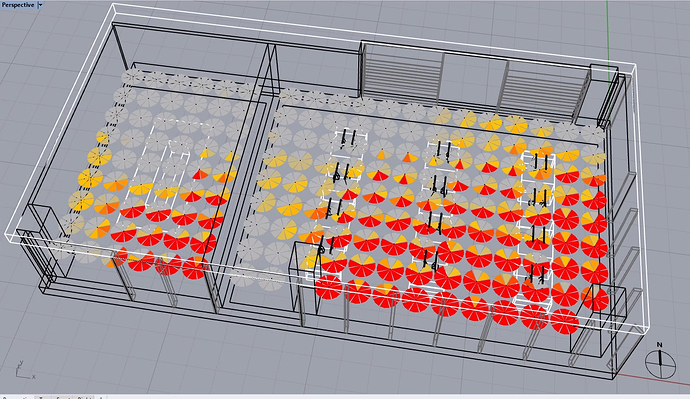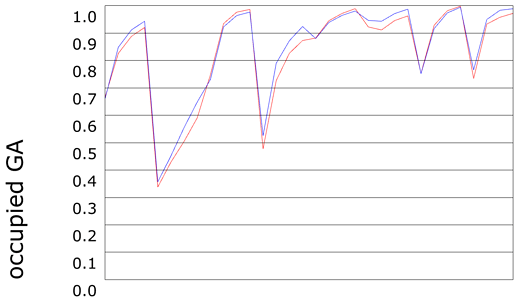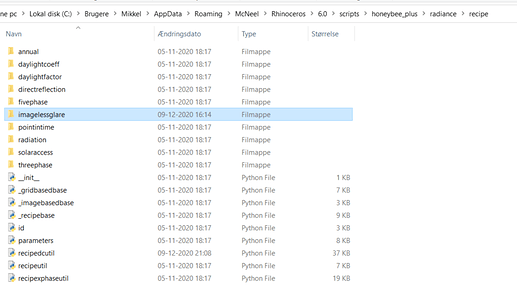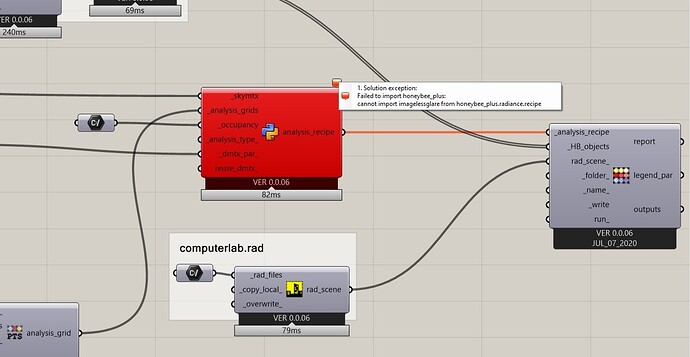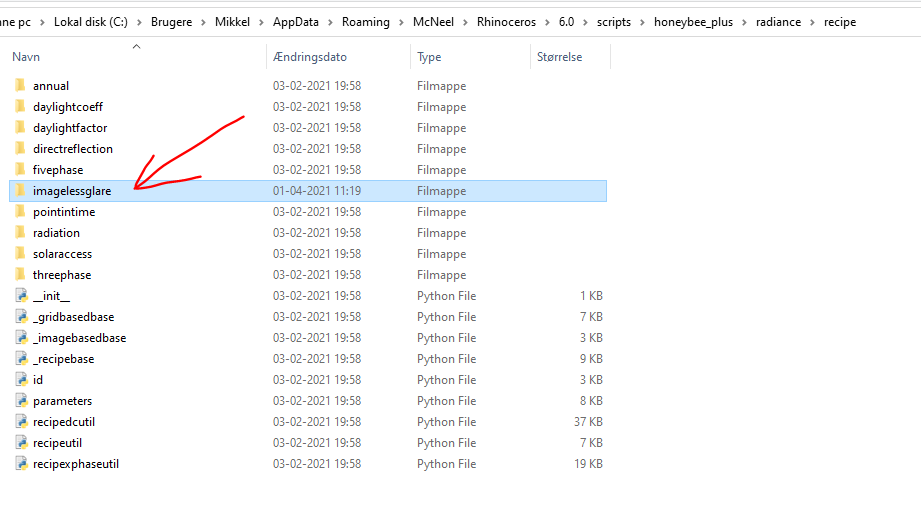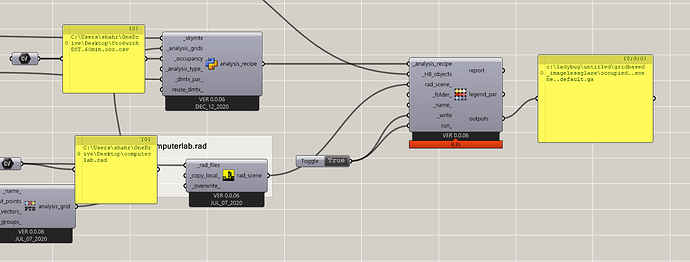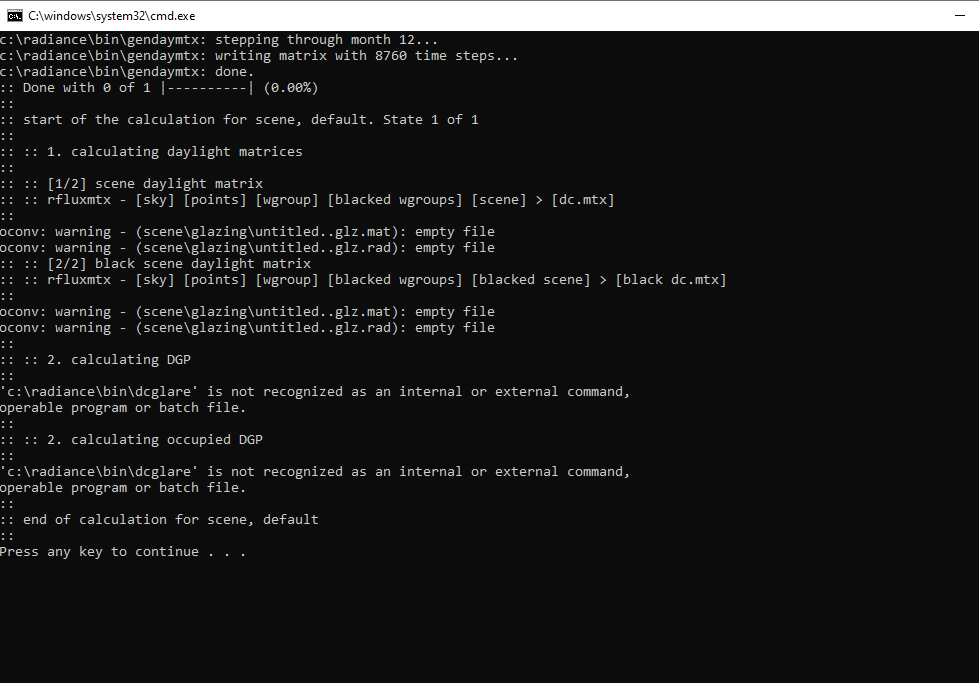Hello everyone. Today I read about Radiance 5.3 updates and the new possibilities that have been added. I also came across @Nathaniel documentation about Annual DGP and sGA (here).Using Accelrade program with radiance, simulation time have also greatly shrunk from hours to some minutes. Therefore I have a question regarding the possibilities of simulating dgp for multiple Test points using the new feature dcglare and acclerad. To make myself clearer I am talking about something Climate Studio does for annual glare studies for various test points. Is it possible with Honeybee plus? @chris @mostapha
There’s no built-in functionality for producing a graphic like that but you can always set up a Grasshopper definition to iterate through a bunch of points and a bunch of vectors for each point. Then you can assemble the resulting DGP values and color some vectors or other geometry.
We may add some out-of-the-box functionality to produce graphics like that in the future. But it’s currently a lot of computation time to correctly produce a graphic like that, even when using Accelerad to render each view. And it’s all still just for a single point in time. We are working on implementing Honeybee[+] recipes in a way that can scale for cloud computing purposes and this type of study might be a good candidate for such cloud resources.
Thanks for the clarification Chris. Hope to see such simulation in future updates with cloud computing power.
Hi @chris,
You might want to take a look at the recipe that @Asisnath linked to (here). The point of imageless DGP calculation is that it doesn’t need to render each view, which is why it’s so fast with or without Accelerad.
Thanks for the useful reference, @Nathaniel . I’ll take a read through your docs once I get the chance.
I wanted to see if I could replicate Nathaniel’s annual tutorial with the rays file “screenviews.ray” (32 views) using HB[+]. Below is the occupied GA for the views. The red is from HB[+] and the blue is from Nathaniel’s tutorial. It seems promising but I did not test it further.
I used identical Radiance parameters for each run - but since I copied the DC gridbased recipe and built on that, HB[+] also writes other parameters that are not included in Nathaniel’s tutorial. For the 1 ab matrix HB[+] uses the blacked geometry.
Below is the sample Grasshopper script.
imagelessGlare_Test.gh (495.2 KB)
Below is the Python script (“imagelessglare” folder), which must be placed here:
imagelessglare.zip (8.6 KB)
Below is the files that HB[+] writes.
Hi Chris. I´m working with optimal facades solutions, and testing some fast daylighting simulation models. I tested 2-phase, accelerade, and now Climate studio. That is a way to reproduce the same simulation method from Climate Studio in Honeybee+? Also, I´m really interested in the cloud computing. 
Hi @Nathaniel,
I am wondering if the imageless approach could be applicable for space with different specifications. I tried the file but seems it does not work.
Thanks
Hi @masoome ,
Can you be more specific about what you tried to do and what errors you received? If your question is specific to the method presented in the tutorial, you can use https://discourse.radiance-online.org/ to ask your question, as this forum is dedicated to Ladybug Tools.
Nathaniel
@Nathaniel Thanks for the prompt response.
I have this error as shown in the picture. Also, I do not know how I could produce computerlab.rad and
screenviews.ray files for my project. Hope it is clear
Thanks
@masoome, are you sure you have the folder imagelessglare as seen below?
For your own project you can import the model as _HB_objects. You do not need computerlab.rad - this was just to compare with Nathaniel’s model. You can create your own view rays by inputting your view points in _test_points and view directions in pts_vectors_.
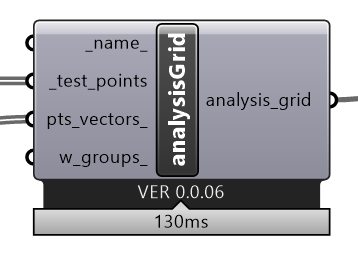
@mikkel Thanks for sharing.
I am facing an issue, could you please help? I used the code file and set it up as you have done using Nathaniel’s annual tutorial. I ran it but it doesn’t write anything on the “occupied…scene…default.ga” and “views…scene…default.dgp” files. It only generates an empty file for these. What could have caused this?
I can run the script fine. Can you try add “pause” at the end of commands.bat, and then execute the batch file outside Grasshopper? Let me know if you get any error messages.
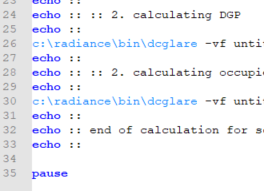
It looks like you have an older Radiance version than 5.3, or you somehow removed dcglare from the Radiance/bin folder. You should install version 5.3 or any of the newer pre-releases. Then I assume it will work for you as well.
Thanks, as you said something was missing, and reinstalling the radiance solved the issue.
hi masoome
i have a same problem . i unlocked those files (imageless glare file 3.8 mb) and copied As shown in the image above but now i have a same error . can you help me
